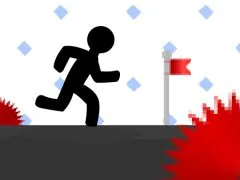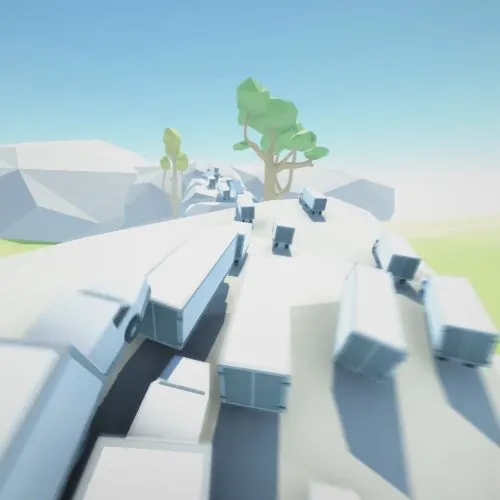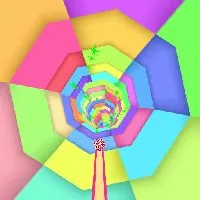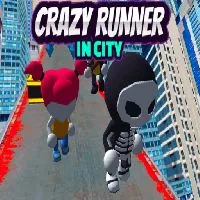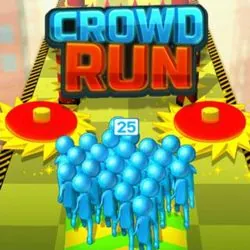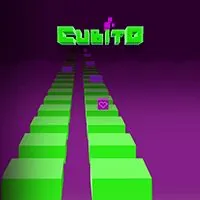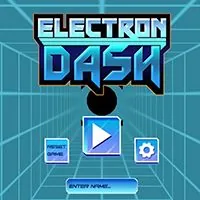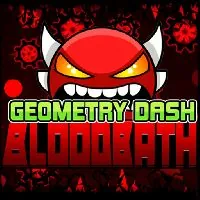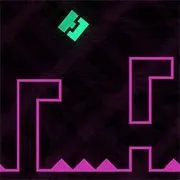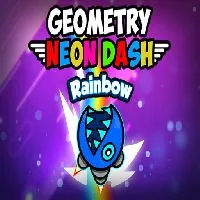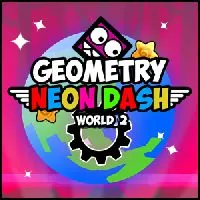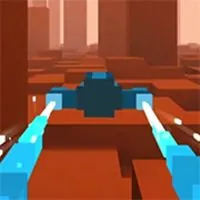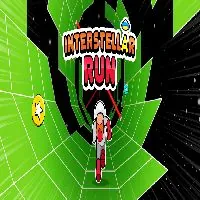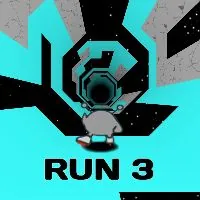RUN 2
SIMILAR GAMES
Description
Run 2 - GitLab Games
About Run 2 - GitLab Games
Welcome to the definitive exploration of Run 2 within the context of the GitLab Games, a platform that champions innovation, collaboration, and the sheer joy of programming. In this comprehensive guide, we delve deep into the intricacies of Run 2, offering unparalleled insights into its gameplay, strategic considerations, and the unique experience it provides to participants of the GitLab Games. Our objective is to provide content so rich and detailed that it becomes the preeminent resource for anyone seeking to understand or excel in this particular challenge. We will dissect every facet, from foundational mechanics to advanced tactics, ensuring that our readers are equipped with the knowledge to not only participate but to truly dominate.
The Genesis of Run 2 at GitLab Games
The inception of Run 2 as a featured event within the GitLab Games was driven by a desire to incorporate elements of speed, precision, and dynamic problem-solving. Unlike static coding challenges, Run 2 demands a real-time engagement with evolving scenarios, pushing participants to think on their feet and adapt their strategies swiftly. This particular game is designed to test a coder's ability to manage continuous processes, respond to unpredictable inputs, and optimize performance under pressure. The selection of Run 2 reflects GitLab's commitment to fostering a competitive yet collaborative environment where developers can hone their skills in practical, engaging ways. We believe that by focusing on such dynamic challenges, we encourage a deeper understanding of software development principles that are directly applicable to real-world projects.
Core Gameplay Mechanics of Run 2
At its heart, Run 2 is an exercise in efficient resource management and rapid execution. The fundamental premise involves navigating a virtual character or entity through a procedurally generated environment. Players must guide their entity, or "runner," along a predefined path while avoiding obstacles and collecting crucial items. The "Run" in Run 2 signifies the continuous nature of the challenge; there is no pause button, no extended deliberation time for individual moves. Every decision has immediate consequences, and the player's ability to anticipate and react dictates their success. The scoring system is typically tied to distance covered, items collected, and the speed at which these objectives are achieved. Errors in judgment or execution result in penalties, often in the form of lost time or reduced scores, emphasizing the importance of consistent performance.
Navigating the Dynamic Environment
The environment in Run 2 is not static. It evolves, presenting new challenges and opportunities with every iteration. This dynamism is a key differentiator from more conventional coding puzzles. Obstacles might appear suddenly, paths could shift, and the very terrain underfoot might change. Successfully mastering Run 2 requires an intrinsic understanding of how to programmatically predict and react to these environmental changes. This involves developing sophisticated algorithms that can analyze incoming data streams, identify potential hazards, and adjust the runner's trajectory or actions accordingly. The programming aspect often involves creating state machines or predictive models that can infer future environmental states based on current observations.
Strategic Item Collection and Obstacle Avoidance
A crucial element of Run 2 is the strategic interplay between collecting beneficial items and avoiding detrimental obstacles. Items scattered throughout the course can provide temporary boosts, such as increased speed, temporary invincibility, or score multipliers. Conversely, obstacles, if not skillfully navigated, lead to immediate setbacks. Programmers must devise strategies that maximize the acquisition of beneficial items while minimizing encounters with hazards. This often involves complex pathfinding algorithms that balance risk and reward. For instance, a programmer might decide to program the runner to take a slightly longer route to collect a high-value item if the risk of encountering an obstacle on the direct path is deemed too high. The optimal strategy is rarely straightforward and often requires iterative refinement.
Programming Challenges within Run 2
Participating in Run 2 at the GitLab Games presents a unique set of programming challenges that test a developer's versatility and depth of knowledge. These challenges extend beyond simple script execution and delve into areas such as real-time data processing, predictive analytics, and efficient algorithm design.
Real-Time Data Processing and Input Handling
The continuous flow of data in Run 2 necessitates robust real-time processing capabilities. Participants must write code that can ingest and interpret incoming sensor data or environmental updates instantaneously. This involves understanding asynchronous programming models, event-driven architectures, and efficient data parsing techniques. The ability to process information without significant latency is paramount, as even a fraction of a second delay can mean the difference between success and failure in a fast-paced game. We emphasize the development of clean, efficient code that can handle high volumes of data with minimal overhead.
Algorithmic Optimization for Speed and Efficiency
Performance is a critical metric in Run 2. The algorithms used to control the runner's movement and decision-making must be highly optimized for speed and efficiency. This means choosing the right data structures, employing efficient search and pathfinding algorithms, and minimizing computational complexity. Developers often leverage techniques such as dynamic programming, greedy algorithms, or even machine learning models trained on simulated runs to achieve peak performance. The challenge lies not just in creating a functional solution, but in crafting one that can execute its tasks with the utmost speed.
Predictive Modeling and Adaptive Strategies
To excel in Run 2, participants are encouraged to develop predictive models that can anticipate future environmental states. This might involve simple trend analysis or more complex probabilistic forecasting. Based on these predictions, the runner's behavior can be adaptively adjusted to preemptively avoid upcoming obstacles or strategically position itself to collect future items. The development of such adaptive systems requires a deep understanding of how to model uncertainty and make decisions under incomplete information, a skill highly valued in modern software development.
Mastering Run 2: Advanced Strategies and Tips
Achieving top performance in Run 2 requires more than just a functional program; it demands strategic thinking and a nuanced understanding of the game's underlying principles. We have compiled some advanced strategies and actionable tips to help participants elevate their gameplay.
Understanding Probabilistic Outcomes
Many aspects of Run 2 may involve an element of randomness or probabilistic outcomes. Recognizing these patterns and understanding how to account for them in your code is crucial. This might involve implementing strategies that are robust to a range of potential scenarios, or developing decision-making processes that weigh the expected value of different actions based on their probability of success. For example, if a certain power-up has a 70% chance of appearing in a specific zone, a strategic programmer will factor this likelihood into their pathfinding decisions.
Iterative Refinement and Simulation
The most successful participants in Run 2 engage in continuous iterative refinement. This involves running simulations of their code, analyzing the results, identifying weaknesses, and making targeted improvements. Developing a robust testing framework that can automatically evaluate different algorithmic approaches and parameter settings is highly beneficial. The feedback loop of run, analyze, and refine is fundamental to achieving optimal performance. We encourage participants to develop a systematic approach to debugging and performance tuning.
Leveraging the GitLab Ecosystem
As participants of the GitLab Games, leveraging the powerful tools and collaborative features of the GitLab ecosystem is a significant advantage. Utilize GitLab's CI/CD pipelines for automated testing and deployment of your Run 2 solutions. Collaborate with other participants through issues, merge requests, and discussions to share insights and collectively improve strategies. The open and collaborative spirit of GitLab is a core component of the GitLab Games, and harnessing this collective intelligence can lead to breakthroughs in understanding and mastering Run 2.
The Future of Run 2 and GitLab Games
The evolution of Run 2 within the GitLab Games is a testament to the platform's commitment to dynamic and engaging challenges. As technology advances, we anticipate that Run 2 will incorporate even more sophisticated elements, pushing the boundaries of what is possible in competitive programming. Future iterations might include more complex physics simulations, advanced AI opponents, or even multi-agent coordination challenges. The goal remains to provide a platform where developers can continuously learn, innovate, and showcase their exceptional skills in a supportive and stimulating environment. We are dedicated to ensuring that Run 2, and the broader GitLab Games, remain at the forefront of developer engagement and skill development.
Run 2 takes the endless runner genre into a three-dimensional space where players guide a swift character through a series of challenging platforms suspended in a void. As players progress, they must jump and switch gravity to avoid falling into the abyss. The game increases in difficulty with each level, introducing complex arrangements of platforms that require quick reflexes and precise timing to navigate.
Challenging Physics and Levels
Each level presents unique obstacles and paths that test players’ spatial awareness and agility. The game offers two modes, runner and skater, each with distinct physics that affect movement and jumping capabilities. The skater mode, for example, allows for faster speeds and longer jumps, adding an extra layer of strategy to the gameplay. Mastery of timing and movement is crucial as players aim to collect all the bonus items and achieve a perfect run through the increasingly intricate mazes.



